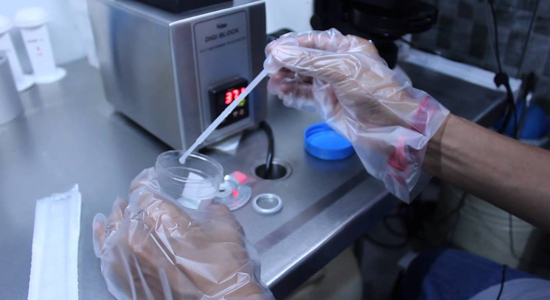Scientists have overcome a common genetic cause of male infertility by creating a healthy sperm in the laboratory. The research raises the future prospect of hope for men who cannot father children because they have three instead of two sex chromosomes.
An estimated one in 500 boys is born with an extra X or Y sex chromosome that can disrupt the formation of mature sperm, leading to infertility.
Scientists at London’s Francis Crick Institute, working with Japanese colleagues, used a stem-cell technique to produce sperm from small pieces of connective tissue taken from the ears of infertile male mice.
The mice either had an extra female X or male Y chromosome in addition to the usual XX or XY pairing.
During the process of transforming the fibroblast connective tissue cells into multipurpose stem cells, some of the unwanted extra chromosomes were lost.
The researchers selected those stem cells lacking the extra chromosome and used chemical signals to coax their development into immature sperm cells.
Once injected into the testes of a host mouse, the cells matured to become healthy and properly functioning sperm. These were then used to fertilize eggs and produce healthy, fertile offspring.
Lead scientist Dr. Takayuki Hirota, of the Francis Crick Institute, said: “Our approach allowed us to create offspring from sterile XXY and XYY mice.
“It would be interesting to see whether the same approach could one day be used as a fertility treatment for men with three sex chromosomes.”
The researchers have already taken the first step towards human treatment by conducting preliminary experiments involving men with a three-chromosome infertility condition called Klinefelter syndrome.
Repeating the results seen in mice, they proved it was possible to produce stem cells from the men’s fibroblasts that do not have the extra sex chromosome.
In theory, it should be possible to turn these cells into fertile sperm.
The team, whose work appears in the journal Science, stressed the technique was not yet safe and needed much further development before it could be considered as a way of tackling male infertility.





















